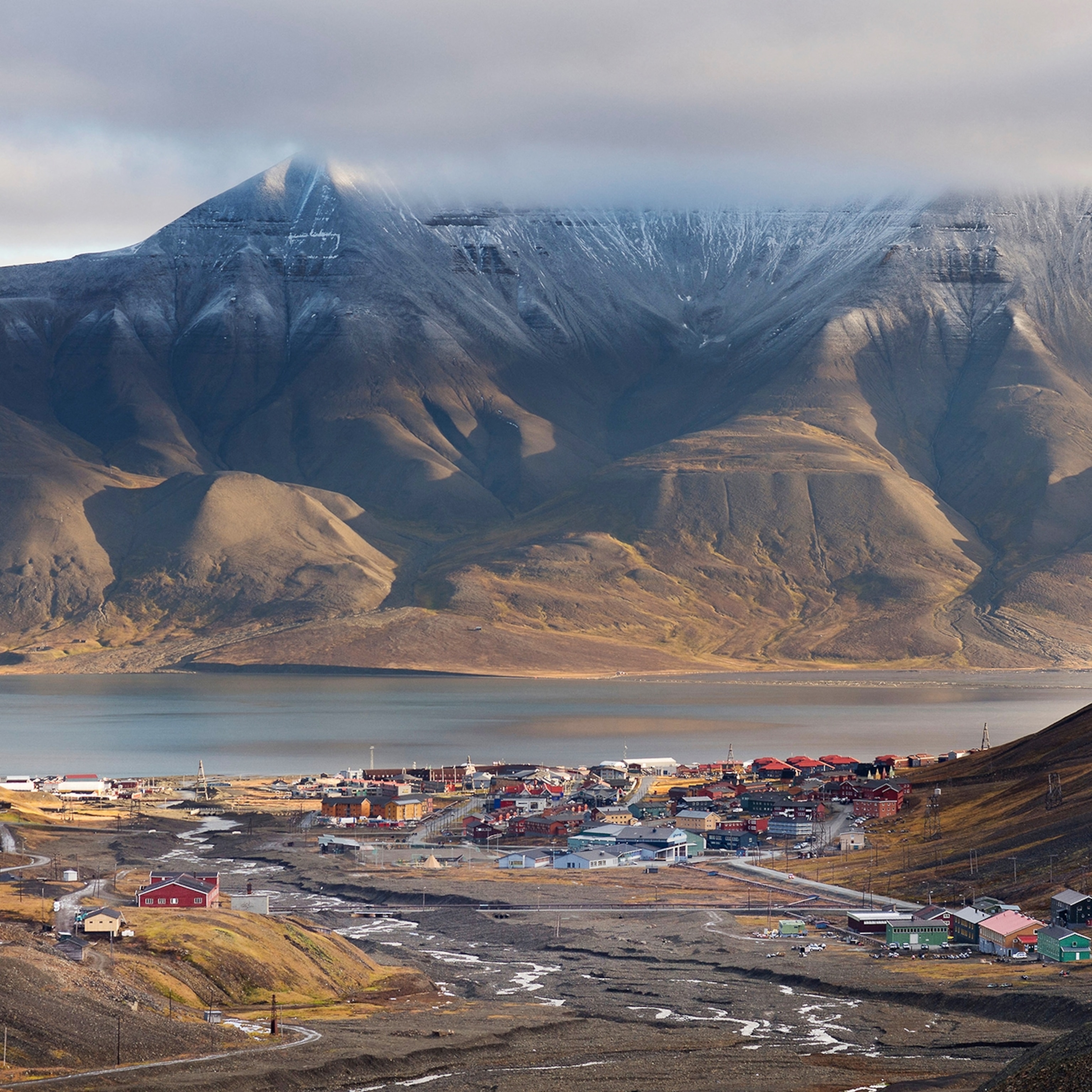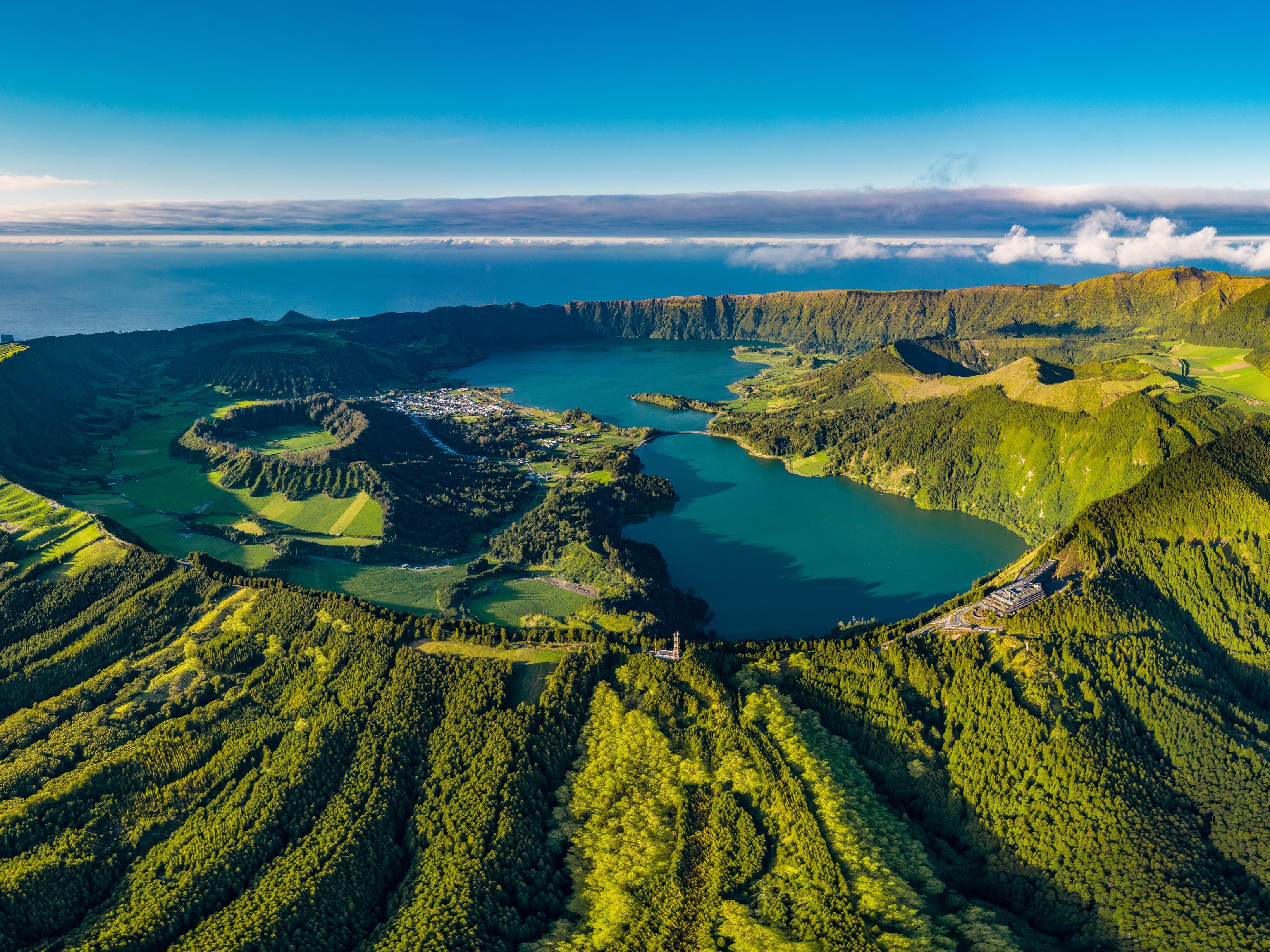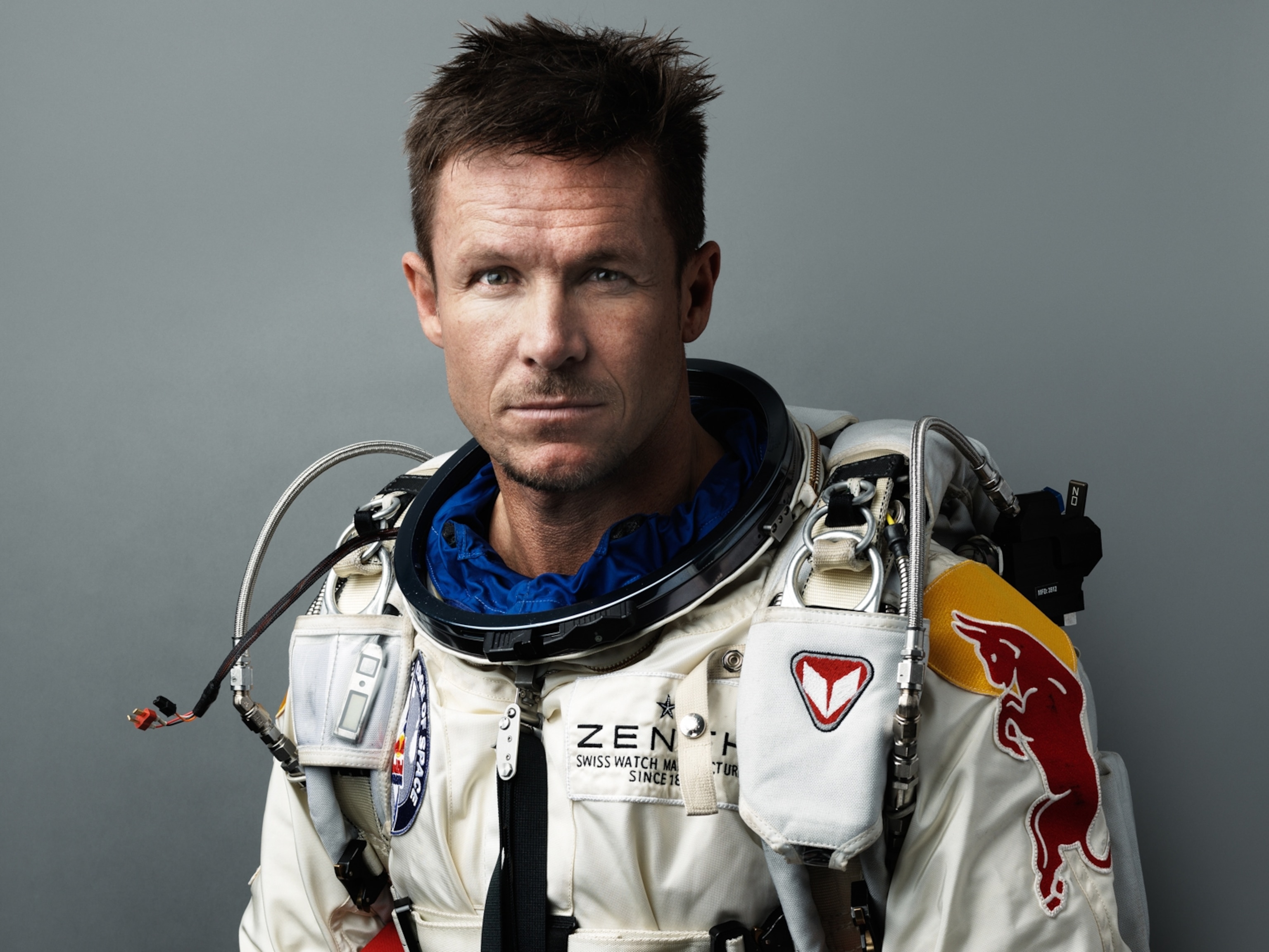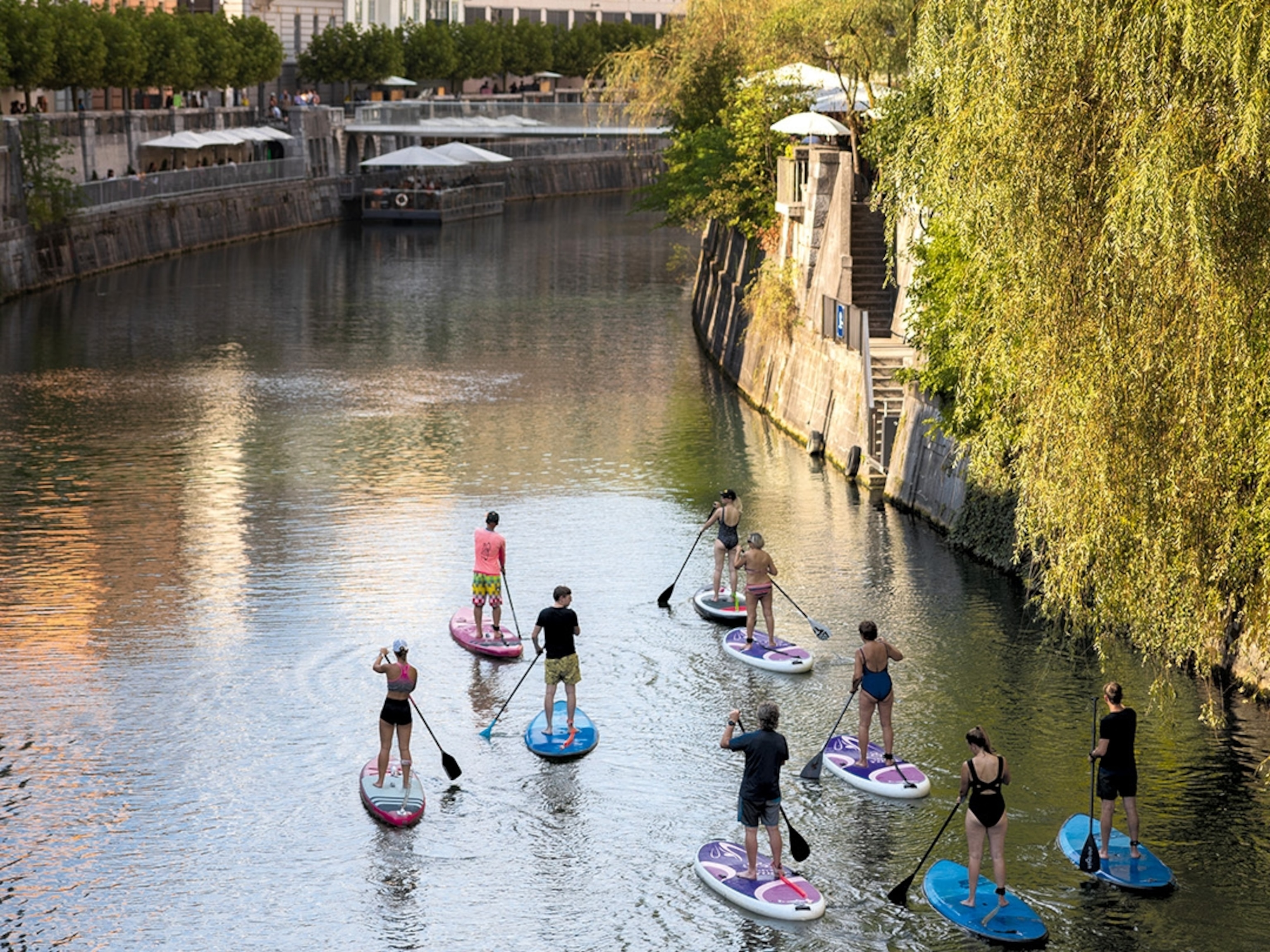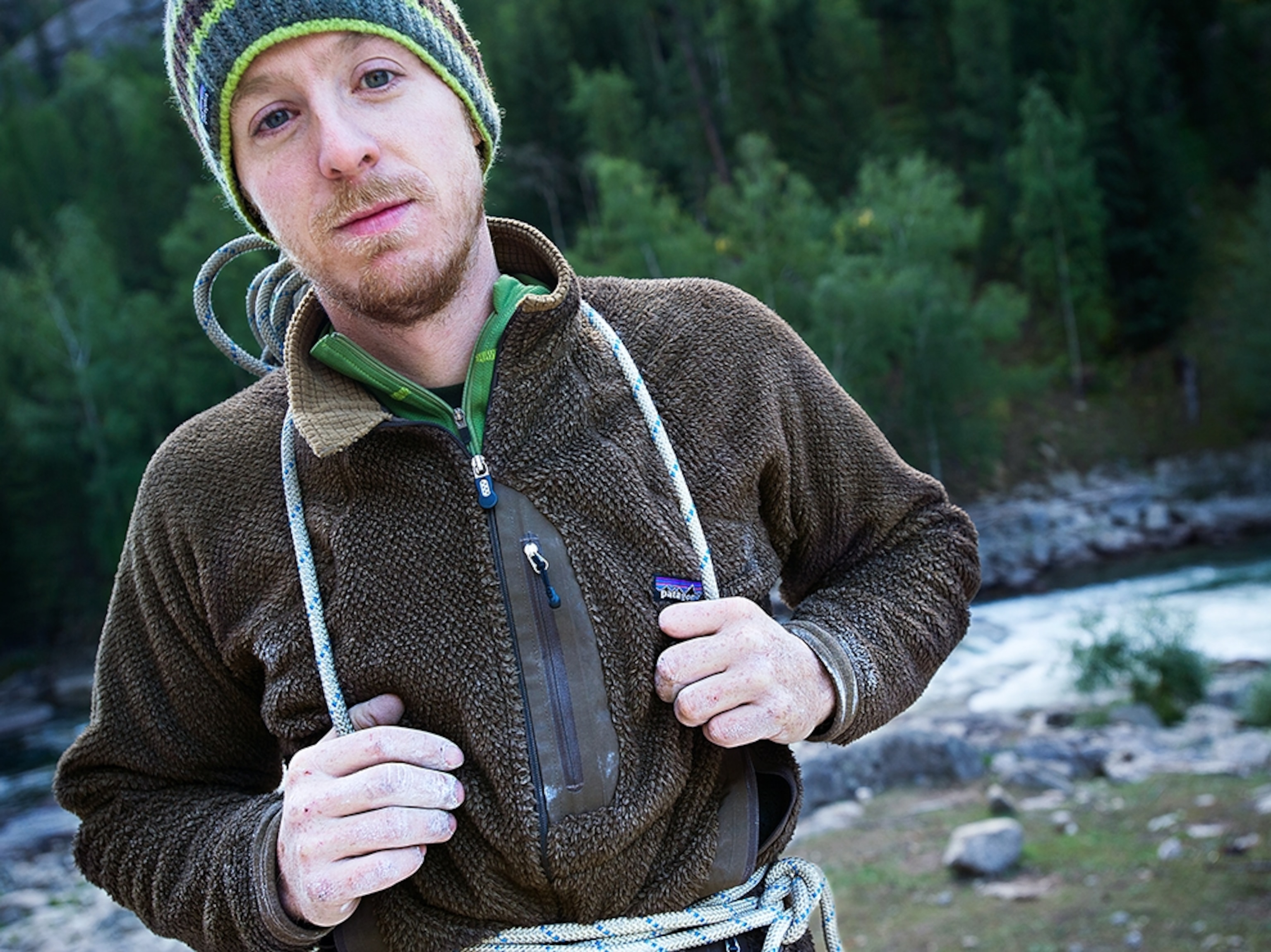
Climber Tommy Caldwell
A rock climber takes alpinism to the next level with the first traverse of Patagonia’s iconic skyline.
Update: Tommy Caldwell and Kevin Jorgeson completed the first free ascent of the Dawn Wall on 3,000-foot El Capitan in Yosemite National Park in January 2015. Read our ongoing coverage of the historic climb.
Five kilometers of granite teeth and seven distinct summits define the iconic Fitz Roy massif. Located in southern Patagonia on the Chile-Argentina border, this skyline has been inspiring climbers since the 1940s, yet an enchainment of all the summits eluded some of the world’s best climbers for decades.
Patagonian granite is particularly tacky and sharp; it shreds ropes. Weather circulates the latitudes between 40 and 50 degrees south and then crashes into southern Patagonia to produce hurricane-force winds and blizzards even in the dead of summer. The climbing demands proficiency on snow, ice, and difficult rock. All of these factors regularly thwarted top climbers’ attempts in the past.
Enter rock-climbing legend Tommy Caldwell, who is arguably the best all-around rock climber on the planet. In the last 15 years, he has established some of the most difficult climbs around the U.S. and on El Capitan in Yosemite.
“I’d heard about it from other climbers like Peter Croft and Dean Potter. It is just so obvious, but it sounded like the most ridiculous objective,” says the 36-year-old Colorado native.
After his first trip to Patagonia in 2006, Caldwell had a thought. Could the speed-climbing tactics developed in Yosemite Valley be applied in places like Patagonia? Iconic El Capitan routes that once took elite climbers days to ascend have become racetracks where the world’s best finish in a matter of hours. The systems developed in Yosemite allow a party of two to climb simultaneously rather than pausing to belay one another.
In Patagonia, conditions are fickle. Snow and ice often clog cracks. Climbers have to shoulder heavy packs while on route. All of this leads to slower climbing. The climbing can be dangerous, and there's no elite search-and-rescue team to whisk you away should something go wrong. The Yosemite system demands world-class competence, but Caldwell believed it would eliminate wasted time from the process, allowing climbers to take advantage of the short gaps between storms.
Caldwell filed the traverse away and waited until he had the right partner. In 2012, when Caldwell teamed up with fellow climbing superstar Alex Honnold to free climb Yosemite’s three biggest walls—El Capitan, Half Dome, and Mount Watkins—in a single day, he realized that he had found the person.
“When Tommy mentioned the traverse I was obviously a little intimidated. I was kind of intimidated [by] doing anything in Patagonia,” says Honnold, who was an Adventurer of the Year in 2010. “I knew he had a lot of experience in Patagonia, and he’s climbed with me enough to know my strengths and limitations, so if he says I can do something, I believe him.”
In terms of weather, 2014 was one of the worst for climbing in Patagonia in recent memory, except for one large window in mid-February. Once Caldwell and Honnold began, they found the route itself in poor condition. Melting snow and ice soaked them. At one point they were borderline hypothermic. Halfway through the traverse, the duo was forced to cut their fraying rope in half to maintain its integrity. This slowed them dramatically during the rappels; a shorter rope means more rappels.
“Both Alex and I have the mentality that you go until it’s obviously dangerous,” says Caldwell. “It may be miserable, but we didn’t feel like we were going to die, so we kept climbing.”
Honnold and Caldwell dispatched the major climbing hurdles in four days before descending on February 16. A single route on one of these seven peaks might take experienced climbers two to three days.
“Climbing with Alex, everything feels half the size,” says the ever humble Caldwell. “It was a surreal experience. Our shared energy got us through it.”
—Fitz Cahall
THE INTERVIEW
National Geographic Adventure: How did you pick the Fitz Roy Traverse?
Tommy Caldwell: My first year in Patagonia, Peter Croft was trying the traverse. I thought it sounded like an unlikely objective at first. The winds are so high, but it’s just so obvious. When you drive to El Chaltén, it’s the view you see. Climbing with Alex [Honnold] in Yosemite last year—he’s just so good—I just started to think maybe it would be possible for us to link up the whole thing.
NGA: You and Alex make a super team together. Most people know him for his free solos. What’s it like to tie in with him?
TC: This was essentially Alex’s first alpine climbing trip. He had spent very little time in crampons and hardly held an ice axe. He just adapted to that terrain so gracefully. My first trip to Patagonia I was in the same boat. Topher Donahue showed me the ropes. It was cool to have the roles reversed. On this climb, Alex was so psyched. His eyes were bright. He kept saying, “This is such a rad adventure.” That was cool for me to see.
NGA: You guys employed a lot of the tactics used in Yosemite speed climbs. Are other climbers using this in the world’s big ranges?
- National Geographic Expeditions
TC: I really think it’s the way forward. Not a lot of people are climbing with the exact systems we used. I think people will realize it works. In the past, simul climbing has been this thing where you are just not supposed to fall—the system we were using changes that.
NGA: Your son Fitz is named after Cerro Fitz Roy. You’ve been there a few times. What’s so special about the place to you?
TC: It’s a really special place for me. I love it there. It’s a good family scene, but there is still the right amount of adventure. People don’t freeze to death down there. It’s not high elevation. It fulfills that need to battle in the mountains that I really love.
NGA: There’s been a lot of attention over the last few years paid to your Dawn Wall project in Yosemite—it’s setting up to be the world’s hardest big route. You’ve been working on it for years. Are you headed back?
TC: That’s become my fall routine (laughing). I’ll stay there through November and maybe December. Last year we got through one of the major hurdles, but there are still two pitches that we need to finish.
NGA: You’ve become an ambassador for Wheaties. Did you imagine that ever happening? A rock climber on a Wheaties box?
TC: I’m not on the Wheaties box yet. I’m in the running. Right now I’m just featured on their web page. It’s cool. I grew up looking at all the coolest athletes on the Wheaties box. When this came, I thought, That is so cool.

